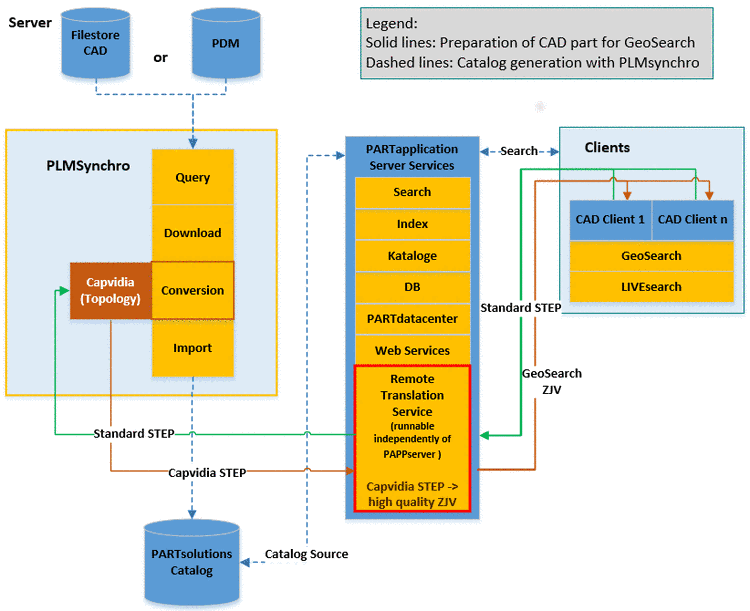Manual
Login
Our 3D CAD supplier models have been moved to 3Dfindit.com, the new visual search engine for 3D CAD, CAE & BIM models.
You can log in there with your existing account of this site.
The content remains free of charge.

Top Links
Manual
The Remote Translation Service serves to process CAD data of a GeoSearch in the CAD in the same way as parts from a PLMsynchro catalog. Therefor, CAD live data used for the GeoSearch have to be enriched with a fingerprint by Capvidia. During a PLMsynchro run the same happens. The Capvidia license is stored on a server which can be accessed by the PLMsynchro run, but not by the CAD-Client during the GeoSearch. Hereto the Remote Translation Service is used; it becomes active, when the STEP file (STL is not recommended due to missing topological features) comes from CAD and effects the creation of the fingerprint by Capvidia. In this way the complete GeoSearch process is optimized.
The following diagram shows the process of a GeoSearch with a CAD part (solid lines):
Standard STEP of CAD part -> Remote Translation Service delegates STEP for conversion to high quality STEP to Capvidia -> Remote Translation Service changes Capvidia STEP to high quality ZJV -> ZJV is now available on the client for a GeoSearch.
-
In all exes (in pappserver.exe as well), the Remote Translation Service always delegates the conversion, which is defined in transremote.cfg, to psworker.exe.
So only one Capvidia computer is needed, and all processes (also pappserver) apply to this, if needed.
This enrichment always happens on the respective client (seamless or pdatamgr or appserver in the case of WEBAPI search).
The actual GeoSearch only uses fingerprints located in the received ZJV. Then these fingerprints are transferred to the PAPPserver for searching.

![[Note]](/community/externals/manuals/%24%7Bb2b:MANUALPATH/images/note.png)


